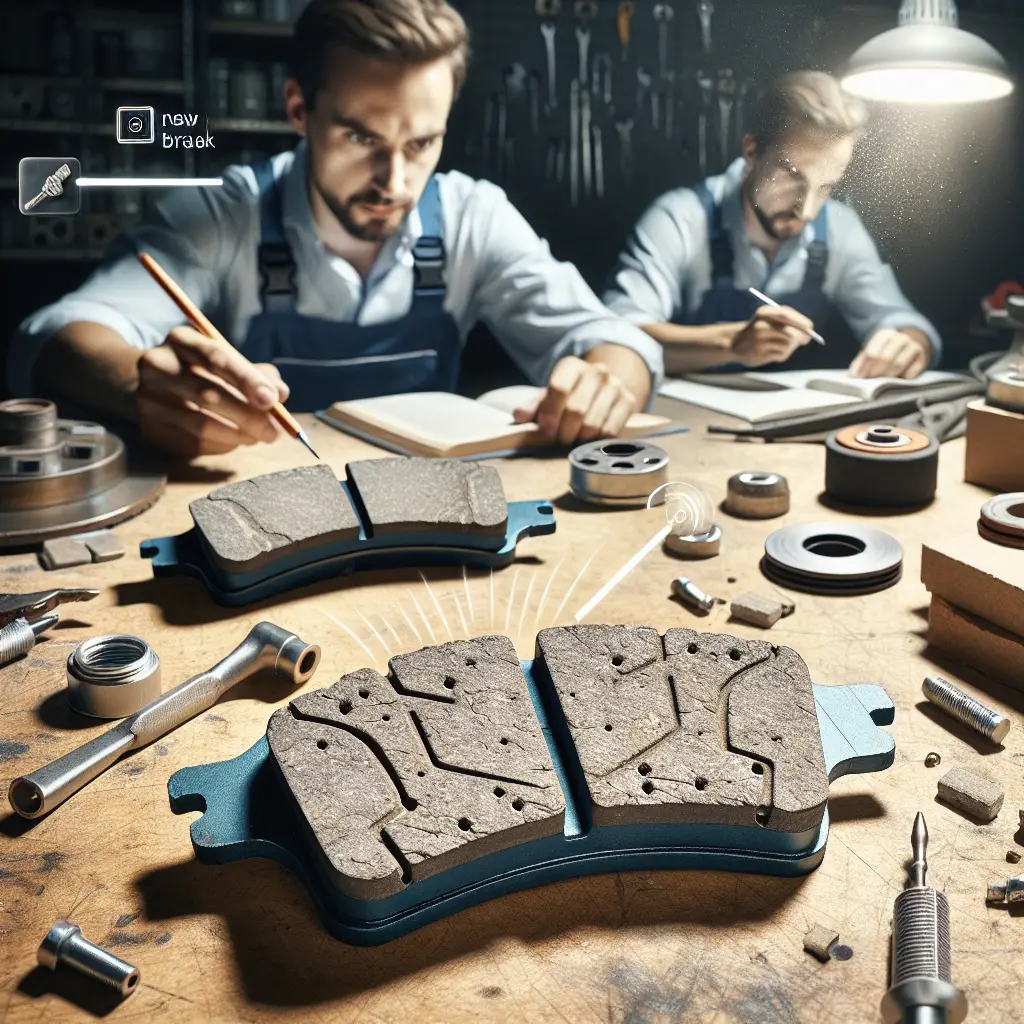What Do Worn Brake Pads Look Like? A Guide to Recognizing the Signs
When it comes to ensuring the safety of your vehicle, the condition of your brake pads is paramount. Like the sole of a shoe that wears down over time, brake pads gradually deteriorate through regular use. Knowing when to replace your brake pads is crucial as it can mean the difference between a smooth stop and a safety hazard.
In this comprehensive guide, we’ll illustrate what worn brake pads look like and provide you with vital information to keep you and your passengers safe. Put the pedal to the metal of knowledge, and let’s drive into the details.
Visual Cues: What to Look For
To maintain effectiveness, brake pads should typically be more than 1/4 inch thick. Once they fall below this thickness, it’s time to consider a replacement. But what does a worn pad actually look like compared to a healthy one?
- Thin Padding: A blatant sign of wear is the amount of the padding left. A new brake pad can start off anywhere from 8 to 12 mm thick. When that friction material wears down to 3 mm or less, it’s a clear indicator that it’s time for a change.
-
Deep Grooves and Scoring: Over time, small bits of debris can become lodged in the brake pad or along the rotor, causing deep lines or grooves to appear – similar to the grooves on a well-used vinyl record. This is a sign of excessive wear that could impact braking performance.
-
Excessive Dust and Debris: While some brake dust is normal, an unusual amount of it on the wheels may indicate the pads are disintegrating at a higher rate.
-
Uneven Wear: Sometimes, you might notice the pad is wearing unevenly – this could be thicker on one end than the other. Uneven pad wear generally signals a problem with the caliper or a misalignment in the brake components.
Auditory Signals: Listen to Your Car
Your car often communicates its mechanical health to you, and the brakes are no exception.
- Squealing or Squeaking: If your brake pads are wearing thin, they will often make a high-pitched squealing noise. This sound is produced by a small, metallic shim indicator embedded in your brake pad. When the pad wears down to a certain point, this metal piece contacts the rotor as a deliberate cue to the driver.
-
Grinding Noise: Hearing a grinding noise when you brake can be an alarming signal that your brake pads have worn down completely, causing the backing plate to grind against the rotor. This not only damages the rotors but can also compromise the effectiveness of your brakes.
The Importance of Regular Maintenance
Neglecting brake pad maintenance can lead to costly repairs and dangerous driving conditions. According to The National Highway Traffic Safety Administration, brake-related problems are among the top causes of vehicle accidents due to mechanical failure. Ensuring regular brake inspections is a key element in accident prevention. Most vehicle manufacturers recommend a brake check with every oil change or at intervals of every 6,000 miles.
Act on the Warning Signs
Recognizing these warning signs can prevent not just potential accidents, but also avoid further damage to your vehicle’s braking system. What might start as simple pad replacement could balloon into a pricier issue if rotors or calipers are also damaged.
DIY Inspection and Professional Advice
If you’re comfortable checking the wear on your brake pads yourself, you should do so every 10,000 miles. However, if you’re not confident in your DIY skills, it’s important to get professional help. There are plenty of reputable garages that offer free brake inspections or will check them as part of a service package. Consumer Reports is a fantastic resource to find tips on vehicle maintenance and recommendations for service providers.
Conclusion
The brakes are the heartbeat of vehicle safety, so ignoring the warning signs of worn pads can result in more than just an expensive trip to the mechanic – it could be life-threatening. Now that you know what worn brake pads look like and how to spot the symptoms of wear and tear, you can take proactive steps towards maintaining your car for safe driving.
As always, regular checks and timely maintenance are your best bet to avoid the fingernails-on-chalkboard scenario in your daily commuting symphony. Keep an eye, and an ear, out for these signs, and ensure your vehicle is always ready to stop on a dime—or at least when you need it to. Drive safely!
Remember your vehicle’s maintenance is not something to sleep on. If you have any doubts about your brake pads’ condition, it is always better to err on the side of caution and consult with a professional. Your life and those of others could very well depend on it.
For more insightful guides and tips on automotive care, stay tuned to our blog – your go-to destination for reliable, in-depth content in the automotive niche.

